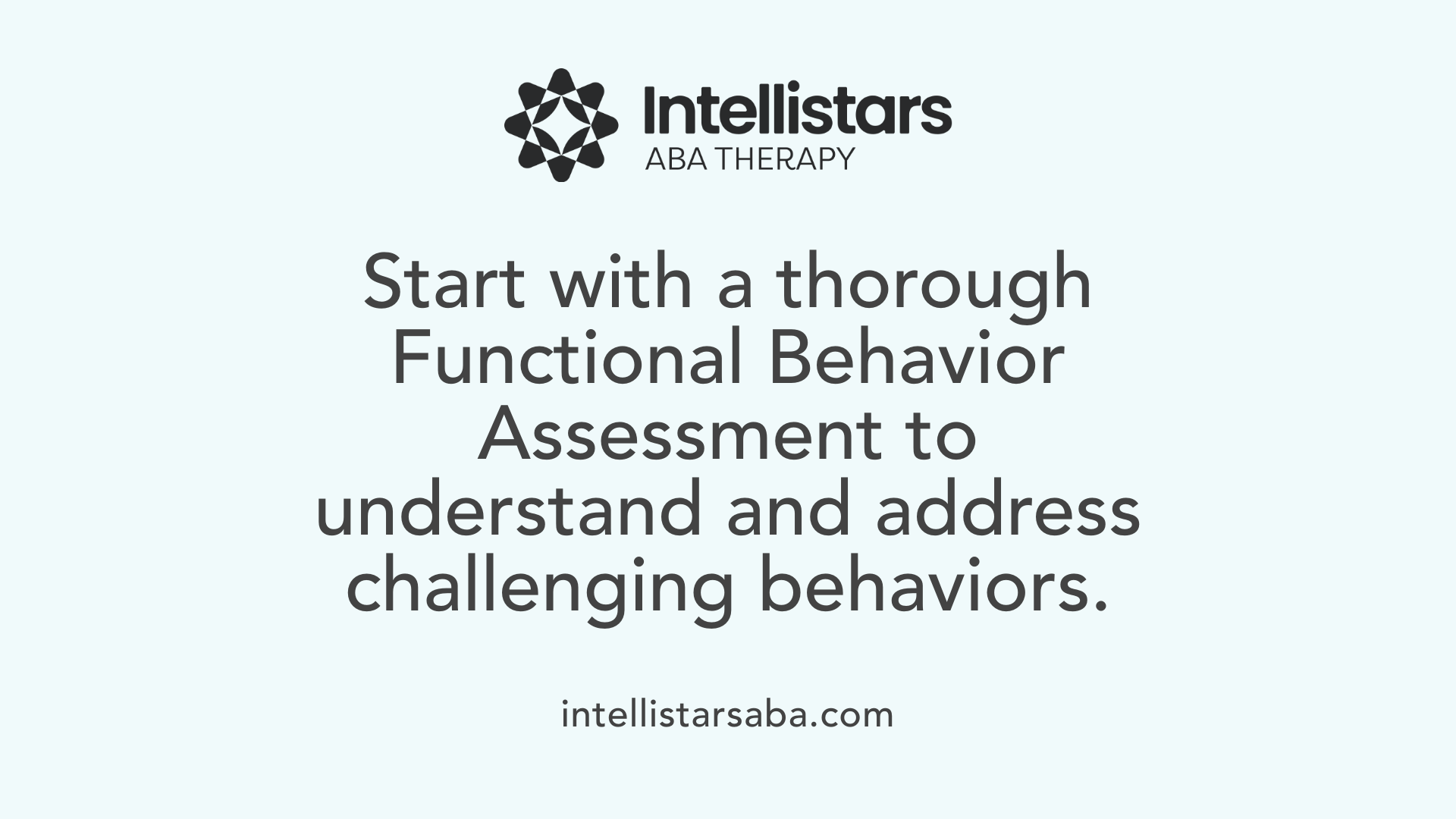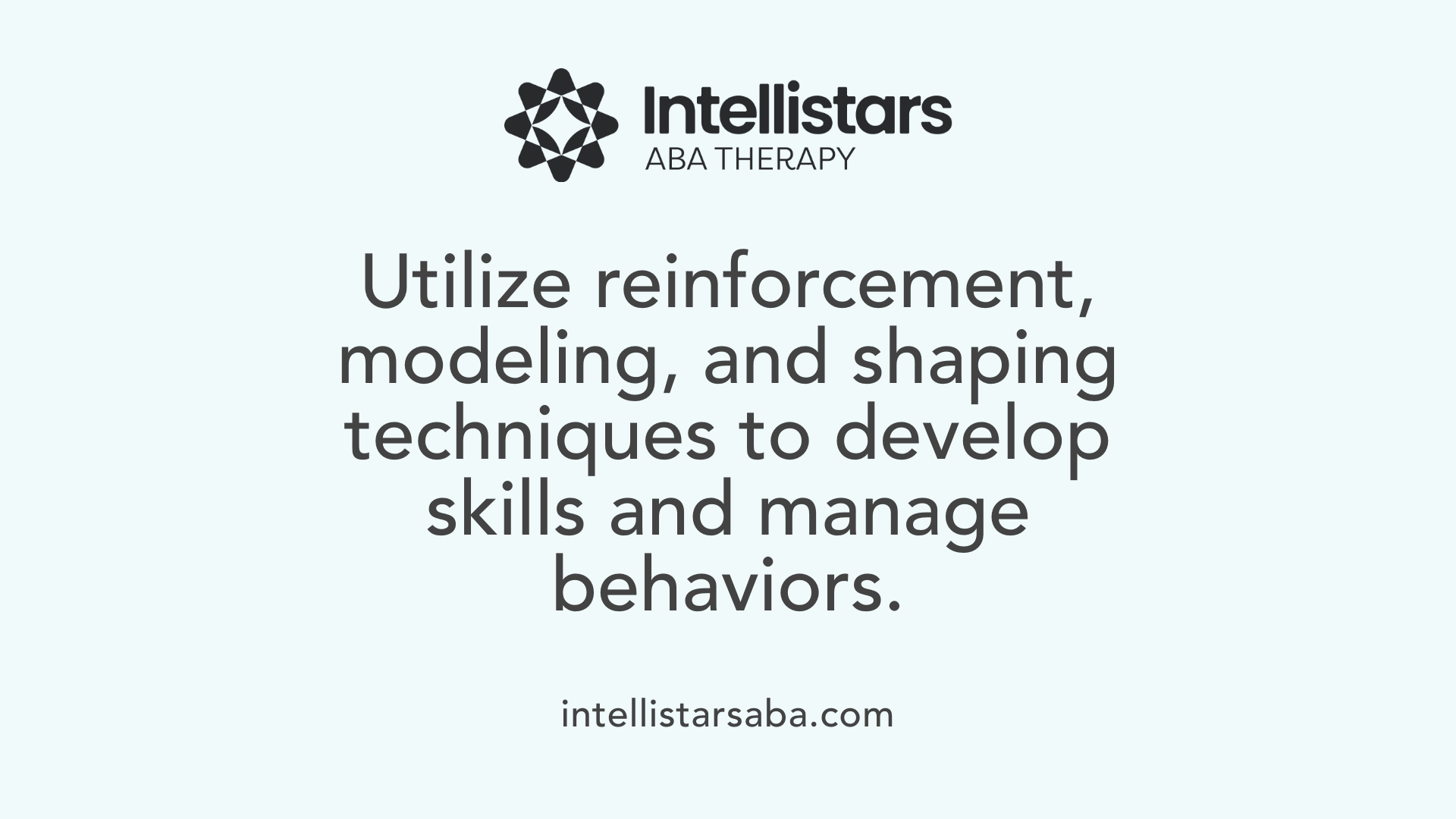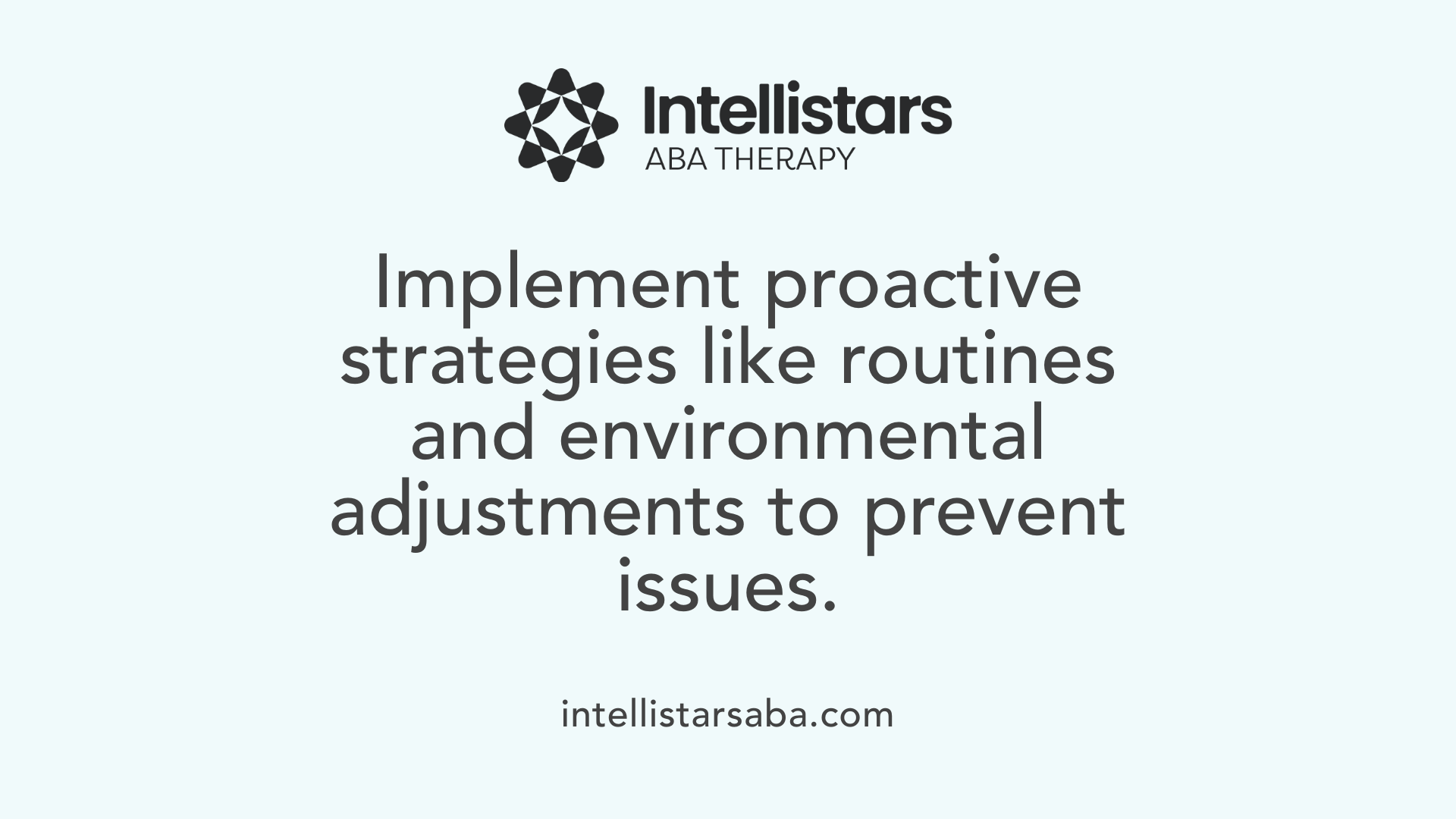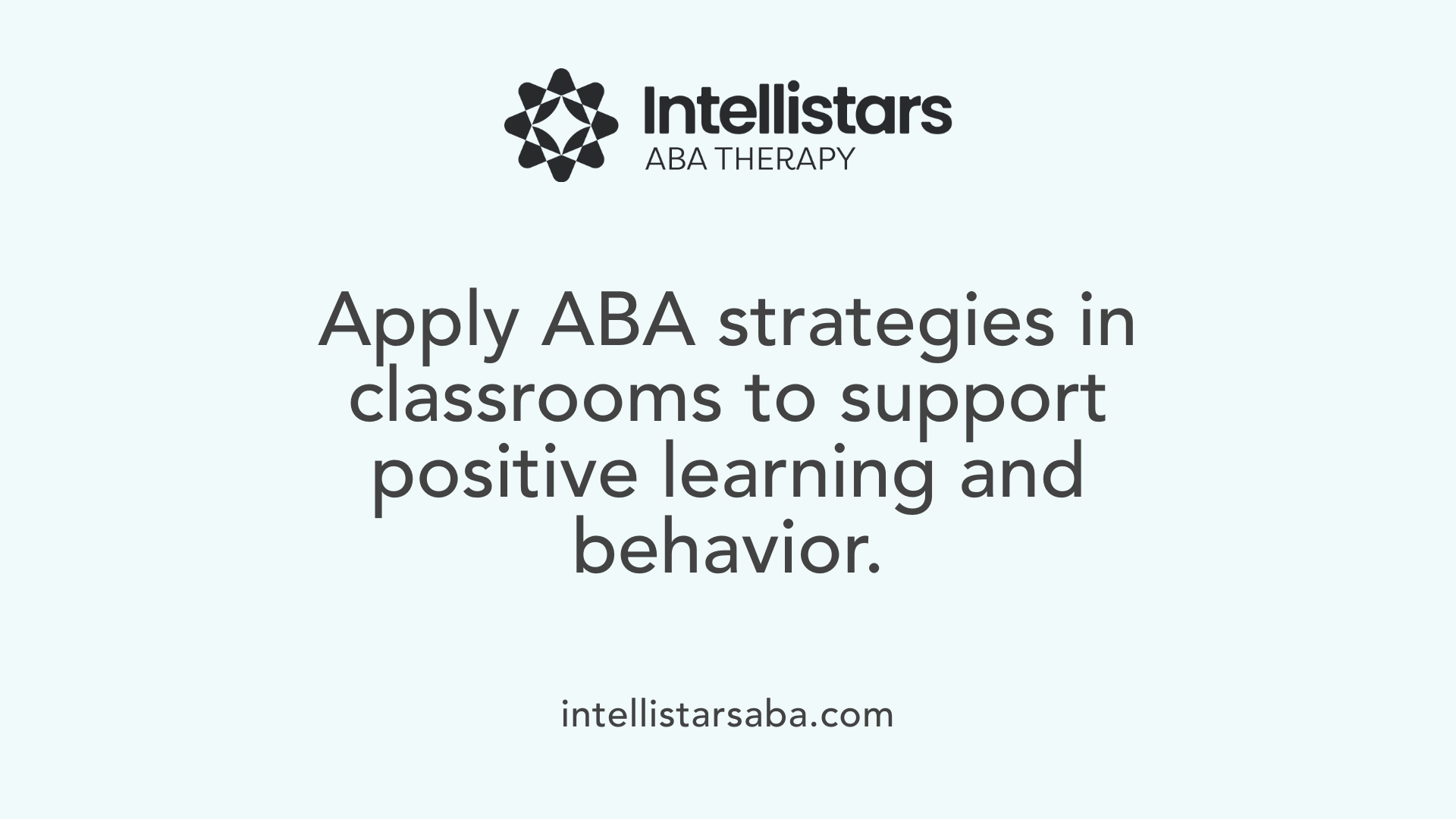Understanding the Foundation of ABA in Behavior Management
Applied Behavior Analysis (ABA) provides robust, evidence-based methods for managing challenging behaviors, especially in children with autism. Its core aim is to understand the functions of behaviors and to develop tailored intervention strategies that promote meaningful change. The first step in any ABA-based intervention is thorough assessment, which involves gathering detailed data through observations and functional behavior assessments to identify triggers, antecedents, and consequences that sustain problematic behaviors. This comprehensive understanding allows behavior analysts and educators to design individualized plans that teach adaptive skills and reduce harmful behaviors effectively.
Initial Steps: Conducting a Functional Behavior Assessment (FBA)
 The first step in managing challenging behaviors using Applied Behavior Analysis (ABA) is to conduct a thorough assessment called a Functional Behavior Assessment (FBA). This process helps identify the underlying reasons or functions behind a child's problematic behaviors.
The first step in managing challenging behaviors using Applied Behavior Analysis (ABA) is to conduct a thorough assessment called a Functional Behavior Assessment (FBA). This process helps identify the underlying reasons or functions behind a child's problematic behaviors.
The assessment process involves gathering detailed information through observation, interviews, and data collection to understand what triggers the behavior, what maintains it, and the consequences that reinforce it. One of the key methods used is ABC analysis, which stands for Antecedent, Behavior, and Consequence.
ABC data collection involves recording what happens immediately before the behavior (antecedents), the behavior itself, and what happens afterwards (consequences). For example, a child might act out when asked to do difficult tasks, with the behavior ending when they are given a break. This helps reveal whether the child is seeking attention, avoiding work, or gaining some tangible item.
By analyzing this data, a behavior analyst or trained professional can hypothesize about the function of the behavior—such as gaining attention, escaping demands, or obtaining access to preferred items—in order to develop targeted, effective interventions.
Overall, the FBA and ABC data collection lay the foundation for designing individualized strategies that teach alternative behaviors and reduce problematic ones. The goal is to replace behaviors that are disruptive with positive, appropriate skills that fulfill the same needs.
Understanding the function of behaviors through careful assessment ensures that interventions are tailored to each child's unique needs, increasing the chances of success in the classroom environment.
Principles and Foundations of ABA for Effective Behavior Management

What are the key principles of Applied Behavior Analysis (ABA) for behavioral management?
Applied Behavior Analysis (ABA) is rooted in scientific principles that focus on understanding how behaviors are influenced by the environment. Its core approach involves analyzing the factors that precede and follow behaviors, known as the ABC model—Antecedent, Behavior, and Consequence.
One of the fundamental elements of ABA is the use of positive reinforcement. By providing rewarding stimuli, such as praise, tokens, or preferred activities, desirable behaviors increase in frequency. This technique is often combined with other strategies like shaping, which gradually teaches new skills by reinforcing closer approximations, and prompting, which gives cues to support learning.
Modeling and task analysis are also crucial. Modeling involves demonstrating appropriate behaviors for children to imitate, while task analysis breaks complex skills into manageable steps, allowing systematic teaching.
A vital part of implementing ABA effectively is collecting data through functional behavioral assessments (FBA). These assessments help identify the function or purpose behind challenging behaviors, guiding personalized intervention strategies.
The overall goal of ABA is to foster the development of socially significant skills such as communication, social interactions, and daily living skills, while simultaneously reducing harmful or disruptive behaviors. Generalization strategies ensure that learned behaviors transfer across different settings and situations.
By basing interventions on scientific evidence, ABA practices focus on making improvements that are measurable, effective, and consistent. This approach empowers individuals with autism and other developmental challenges to achieve greater independence and social integration.
Effective Techniques: Reinforcement, Modeling, and Shaping

What techniques can help manage challenging behaviors effectively?
Managing challenging behaviors effectively requires a clear understanding of their reasons, such as communication difficulties, anxiety, or sensory issues. ABA emphasizes several techniques to address these behaviors constructively.
One of the core strategies is positive reinforcement. This involves rewarding desirable behaviors to encourage their recurrence. Rewards can be tangible items like toys or treats, social praise like praising a child's effort, or access to preferred activities. Reinforcement should be chosen based on what the individual finds motivating, which can be determined through preference assessments.
Modeling is another powerful technique. It involves demonstrating appropriate behaviors for children to observe and imitate. This not only teaches new skills but also promotes social learning. For successful modeling, children need to pay attention, retain the observed behavior, reproduce it, and be motivated to do so.
Shaping and chaining are techniques used to teach complex skills gradually. Shaping involves reinforcing successive approximations toward a target behavior. For example, if a child is learning to say a new word, the therapist rewards partial attempts and gradually expects more accurate responses.
Chaining involves teaching a series of behaviors in a specific sequence. In forward chaining, the first step is taught and reinforced first, then subsequent steps are added gradually. This systematic approach helps children learn routines and complex tasks in manageable segments.
These methods are supported by scientific research and are effective in both special education and mainstream classrooms. Consistency in applying these techniques is vital, and intervention plans should be regularly monitored and adjusted based on the child's progress.
Visual supports, such as schedules and cues, further enhance understanding and reduce anxiety, helping children stay engaged and motivated.
In summary, a combination of reinforcement, modeling, and skill-shaping techniques forms the backbone of effective behavior management in ABA, enabling children to develop new skills and reduce problematic behaviors.
Proactive Strategies and Environmental Modifications

What are some proactive strategies to prevent challenging behaviors?
Proactive strategies are designed to shape and improve the social environment of the classroom, reducing the likelihood of challenging behaviors before they occur. These techniques focus on creating a well-structured, predictable, and supportive environment that supports student success.
One common approach is establishing clear routines and consistent schedules. When children know what to expect, it decreases anxiety and uncertainty that can lead to disruptive behaviors. Visual supports such as visual schedules, social stories, and cues help children understand daily routines and expectations.
Priming is another effective technique. It involves preparing children for upcoming activities by giving clear, descriptive information beforehand. For example, using the first-then language—
Implementing ABA in Educational Settings

How can ABA strategies be applied in educational or classroom settings?
Applied Behavior Analysis (ABA) offers practical techniques that can significantly improve classroom management and student success. Educators can start by establishing consistent routines and using visual supports such as schedules, social stories, and cues. These tools help students understand expectations and reduce anxiety, which often leads to fewer challenging behaviors.
Reinforcement plays a central role. Teachers can reward positive behaviors, like following instructions or completing assignments, through praise, tokens, or preferred activities. For example, offering a sticker or verbal praise for participating actively encourages the student to repeat the behavior.
Modeling is another effective strategy. When teachers demonstrate appropriate social and academic behaviors, students are more likely to imitate and learn these skills. This might include demonstrating proper hand-raising or social greetings.
Creating an environment that minimizes distractions is also crucial. Adjusting seating arrangements, sterilizing the environment, and providing calming spaces can prevent triggers for difficult behaviors.
In addition, conducting functional behavior assessments (FBA) allows teachers to understand why a behavior occurs — whether it's for attention, avoiding tasks, or gaining tangible rewards. Based on this data, individualized behavior intervention plans can be developed and refined.
Overall, ABA strategies foster a supportive classroom where students can develop communication, social, and learning skills while reducing disruptive behaviors. These techniques are adaptable for different settings and focus on creating a positive, predictable, and empowering learning environment.
Responding to Difficult Behaviors with Effective Interventions
What are effective intervention techniques for difficult behaviors?
Addressing challenging behaviors in the classroom requires systematic and individualized approaches. Developing a clear Behavior Intervention Plan (BIP) is crucial. These plans often include positive reinforcement, environmental adjustments, and skill-building strategies tailored to each child's needs.
Preventive techniques also play a vital role. Teachers can reduce the likelihood of problematic behaviors by giving clear instructions, using the child's name to gain attention, praising appropriate behaviors immediately, and staying calm. These proactive steps set a positive tone and build a supportive environment.
Data collection is fundamental to understanding and managing behaviors. Using methods like the ABC (Antecedent, Behavior, Consequence) analysis helps identify triggers and functions of behaviors. This insight allows educators to select suitable replacement behaviors that serve the same purpose but are more appropriate.
Consistent application of the intervention strategies outlined in the BIP ensures better outcomes. Regular collaboration among behavior analysts, teachers, and parents fosters a unified approach. This teamwork also helps in making data-driven adjustments when needed.
Popular structured frameworks like Positive Behavioral Interventions and Supports (PBIS) provide a multi-tiered system that promotes positive behaviors while addressing disruptions early. These approaches emphasize early intervention, reinforcement of desirable behaviors, and creating a climate conducive to learning and social development.
In summary, effective management of difficult behaviors combines individualized planning, preventive techniques, data analysis, and collaborative efforts. Such comprehensive strategies contribute to improving behavioral outcomes and fostering a positive classroom environment.
Strategies for Long-term Success and Generalization of Skills
How can skill development and generalization be effectively supported?
Building lasting skills involves more than teaching behaviors in one setting. It requires designing learning opportunities across different environments and settings, ensuring children can transfer what they learn at school to home or community areas. Techniques like natural environment teaching (NET) and incidental teaching are employed to embed learning in real-life situations, making skills more meaningful and durable. Breaking complex skills into smaller, manageable steps through task analysis allows children to master each part, which enhances overall competence.
In addition, using visual supports, such as schedules and social stories, provides consistent cues that help children understand routines and expectations everywhere. Consistent reinforcement of skills in various contexts encourages generalization, increasing independence and confidence.
What reinforcement systems support sustainable behavioral improvements?
Reinforcement, especially positive reinforcement, is crucial for encouraging desirable behaviors. Token economy systems are frequently employed, where children earn tokens (like stickers or points) for positive actions and can exchange these tokens for preferred rewards. Preference assessments are used to identify what reinforcers are most motivating for each child.
It’s important that reinforcers are effective—meaning the child finds them meaningful and engaging. Natural reinforcers that arise directly from the child's success or activity often work well, creating a natural motivation to continue engaging in good behaviors. Reinforcement should be varied and tailored, preventing satiation and maintaining motivation over time.
How is ongoing progress monitored and adjusted?
Consistent data collection is fundamental to assess whether interventions are effective. Observing and recording behaviors under different circumstances allow practitioners and families to see patterns and measure progress.
Regular review of this data helps identify when strategies need to be modified, whether by increasing reinforcement, changing triggers, or introducing new skills. Progress monitoring ensures that interventions stay aligned with the child's evolving needs, promoting continuous improvement and making long-term success attainable.
| Aspect | Description | Examples |
|---|---|---|
| Skill generalization | Extending learned skills across settings | Using a communication board at school, home, and community |
| Reinforcement strategies | Tailored, motivating rewards | Token systems, natural reinforcement |
| Progress monitoring | Data collection and review | Behavior tracking, weekly meetings |
Moving Forward with Evidence-Based Behavioral Strategies
Implementing ABA techniques in managing challenging behaviors requires a comprehensive understanding of the individual's functions and needs. By conducting thorough assessments, applying core ABA principles like positive reinforcement and environmental modifications, and consistently monitoring progress, educators and caregivers can foster positive behavioral changes. Integrating proactive strategies, effective intervention techniques, and personalized approaches ensures a supportive learning environment that promotes independence and social development, especially in children with autism. Commitment to ongoing evaluation and collaboration among all stakeholders will yield the best long-term outcomes, empowering children to thrive in educational settings and beyond.
References
- How to Use ABA to Manage Challenging Behaviour in the Classroom
- 7 Proactive ABA Strategies to Address Challenging Behaviors
- Effective Strategies For Managing Challenging Behaviors In ...
- Applied Behavior Analysis (ABA) | Autism Speaks
- 13 Effective ABA Techniques To Support Children's Behavior | Motivity
- Behavior Management in ABA Therapy: A Guide for Parents
- How to Use ABA in the Classroom
- How Applied Behaviour Analysis Can Help Children with Autism ...
- Applied Behavior Analysis (ABA) | Autism Speaks






